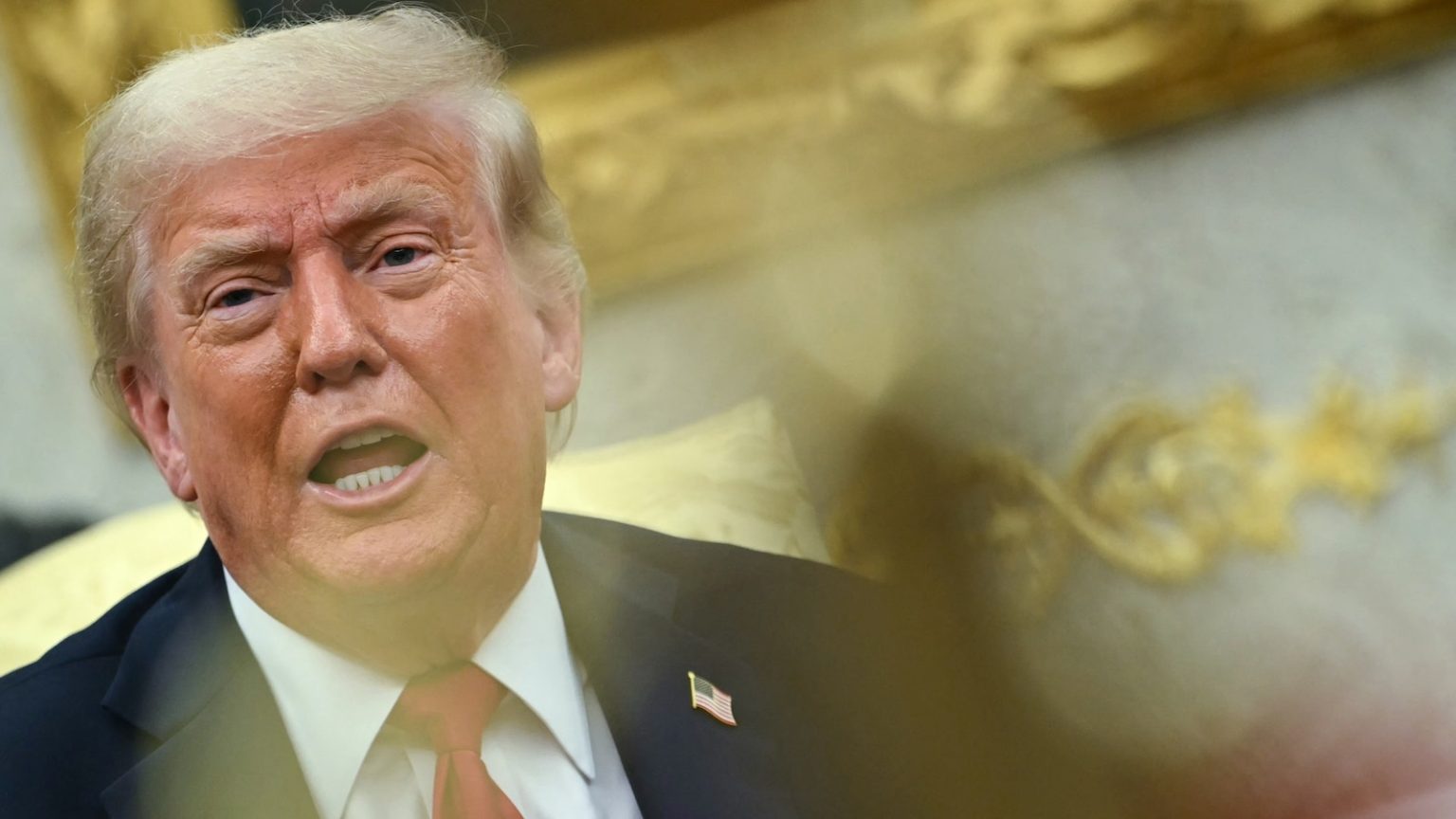LONDON — President Donald Trump had promised a “major statement” on Russia on Monday, and it did look like a big shift in his approach to the war in Ukraine. But significant uncertainty remains amid a lack of key details.
Sitting in the Oval Office with NATO Secretary-General Mark Rutte, and apparently fed up with being slow-walked by Russian President Vladimir Putin, Trump threatened the Kremlin with tough tariffs if it doesn’t make a deal to end the war within 50 days.
But perhaps more important was Trump’s shift on weapons.
After months of seeming to threaten he might cut off military aid to Ukraine entirely, on Monday Trump promised “billions” in weapons would be sent, now that Europe will pay for them.
NATO Secretary-General Mark Rutte speaks during a meeting with President Donald Trump in the Oval Office of the White House, Monday, July 14, 2025, in Washington.
Evan Vucci/AP
Trump and Rutte announced that other NATO countries have now agreed to purchase U.S. weapons on Ukraine’s behalf. Much remained unclear about the deal, but Rutte claimed it meant Ukraine will now be able to get “massive” amounts of military equipment, including ammunition and missiles. European allies, he and Trump said, would also be able to now rush equipment from their own depleted stocks to Ukraine, knowing it can be backfilled.
If Trump now permits a substantial amount of U.S. weapons to continue to flow to Ukraine, that would mark an important change. Since Trump took office, many in Ukraine and European capitals have thought that might well be the best-case scenario for Ukraine, given the U.S. president’s clear hostility to continuing U.S. donations.
Most of all, it would send a very different message to Putin. For months, Putin has believed, Ukraine’s U.S. military backstop has been dissolving under Trump. That has emboldened Putin to push harder in military action against Ukraine. If this deal reverses that, it may start to change Putin’s perception.
Russian President Vladimir Putin chairs a meeting on social issues, in Moscow, Russia July 14, 2025.
Mikhail Metzel/Sputnik via Reuters
But the details will matter. The Patriot missile defense systems Trump has authorized to send are important, given Russia’s hugely increased air attacks. But a real test now will be what other weapons will Ukraine receive. Trump also said the U.S. would send “various pieces of very sophisticated military equipment.” For now, the Pentagon is still working out what will be sent, two U.S. officials told ABC News on Monday.
But Trump on Monday did appear to be much closer to U.S. allies’ view of the war. In contrast to the Oval Office meeting in February where he berated Ukrainian President Volodymyr Zelenskyy, on Monday Trump praised Ukraine as “courageous” and spoke of the “amazing” “esprit de corps” of European countries in uniting to defend it.
On Putin, Trump again expressed frustration, at one point coming close to repeating former President Joe Biden, who called Putin “a killer.”
“I don’t want to say he’s an assassin, but he’s a tough guy. It’s been proven over the years. He’s fooled a lot of people,” Trump said, listing off recent former presidents he said Putin had duped.
Trump said Putin “didn’t fool me,” but he expressed surprise that what he called his “nice” phone calls with Putin had turned out not to mean anything.
“I always hang up say, ‘Well, that was a nice phone call.’ And then missiles launched into Kyiv or some other city, and it’s strange. And after that happens, three or four times, you say the talk doesn’t mean anything,” Trump said. “I go home, I tell the first lady, ‘And I spoke with Vladimir today. We had a wonderful conversation.’ She said, ‘Oh, really? Another city was just hit.'”
President Donald Trump meets with NATO Secretary General Mark Rutte, where President Trump announces a deal to send U.S. weapons to Ukraine through NATO, in the Oval Office at the White House in Washington, D.C., U.S., July 14, 2025.
Nathan Howard/Reuters
The key question now is how seriously will Putin take Trump’s new approach?
The tariff threat also currently remains vague and some experts have expressed doubts it can be effectively imposed. So-called “secondary tariffs” to punish countries that import Russian oil and gas could have a potent effect but are complicated and, for example, could require a major showdown with China.
An obvious question is why did Trump choose to give Putin 50 days before imposing 100% tariffs? One possible explanation is that period is how long Russia’s current summer offensive is predicted to last. Axios reported recently that Putin himself even told Trump in a recent phone call that he intended to push hard for the next 60 days.
The Trump administration may hope Putin will be more inclined to negotiate once Russia’s offensive exhausts itself, particularly if it goes badly. Intensified sanctions — if they come — and greatly increased weapons might slowly push Putin towards real negotiations, if his summer offensive fails to achieve much.
But Putin may not believe Trump has the patience to stick with a hard line.
President Donald Trump speaks during a meeting with NATO Secretary General Mark Rutte in the Oval Office of the White House in Washington, DC on July 14, 2025.
Andrew Caballero-reynolds/AFP via Getty Images
Tatiana Stanovaya, a Russia analyst and founder of R.Politik, wrote on X that many in Russia’s elite viewed Trump’s new approach as just a temporary maneuver to test Putin.
“Once it becomes evident that such pressure is ineffective — expected to be soon — Trump is likely to revert to a diplomatic course, including exerting pressure on Ukraine to reach a compromise,” Stanovaya said, summarizing the group’s thinking.
In the short term, Putin is likely to continue to push as hard as he can. He believes he’s winning. Only when he starts thinking otherwise might he negotiate.


